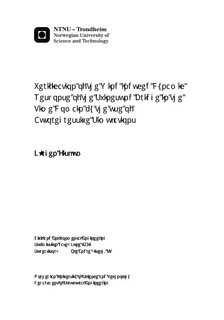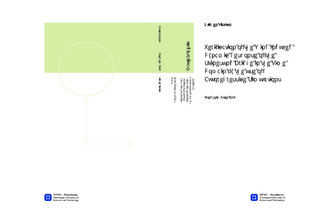| dc.description.abstract | The subject of this thesis is related to verification of wind induced dynamic response of the Svinesund Bridge in the time domain by the use of autoregressive simulations. This thesis starts by giving a theoretical study in the field of time–series simulation of wind induced dynamic loading, with emphasis on the Schur decomposition by AR model and polynomial approximation. This is a procedure that generates a multivariate wind field velocity vector by decomposing the PSD matrix into the basis of the eigenvectors. The advantages of this method is that very few spectral modes exhibit significant power, meaning that one could truncate the spectral modal matrix only evaluating the m first eigenvectors (m << n). Another advantage is that each component of the eigenvectors are very regular functions, which is true independent of the analytical model assumed for the PSD function. This allows, by the use of standard finite element procedure for approximating the eigenvectors, the generation procedure, via standard AR model, to only require a limited number of samples of univariate coherent processes to describe the multivariate wind field, and this number is independent of the number of components in the process. Another advantage making use of the regularity of eigenvectors is that only a small number of subdivision frequencies are needed to approximate the eigenvectors in a polynomial form by a standard finite element procedure. All these advantages combines makes this a very computational effective procedure for generation of a multivariate wind field velocity vector. As a bonus the physical meaning of eigenvectors and eigenvalues of the PSD matrix provides useful information about the stochastic wind process in view of a structural analysis. This because the eigenvalues could be seen as the power of n independent processes W_{1}(t),...,W_{n}(t), while the eigenvectors are mode shapes, similar to the structural modes, associated with the wind field velocity. After the theory is explained an explanation of how the time domain simulations of wind induced dynamic response was created using the NatHaz On-line Wind Simulator (NOWS) is given. Here a discussion regarding choices made in regard to different inputs to NOWS as well as how the simulated wind field velocities was to be applied onto the FEM. These simulations was then applied to a finite element model of the Svinesund Bridge, created in the computer software Abaqus, using several different strategies. Then results were extracted from the model in the form of accelerations from these simulations. These accelerations along with the simulated wind field velocities was then compared with real measurements obtained when the storm Per passed Svinesund Bridge on January 14, 2007. After comparing many different velocities and accelerations from different simulations to the measured response it was concluded that the "Full in 2 points" simulation with approach z_{1} created the best representation of the measured response. The "Full in 2 points" simulation uses a drag coefficient of C_{D}=0.15 on both the windward and the leeward box girder, while the arch has a drag coefficient of C_{D}=0.8. The z_{1} approach indicate that the z-coordinates should be given as if the surface is raising linearly between the sea and the arch abutments, and between each arch abutment and pier 5 and 8. NOWS seems to assume that the terrain under a structure is plane, and therefore seems to use the z-coordinates for both defining the height of a point and the spatial separation between to points. So when z_{1} was the most correct approach this would indicate that getting the correct height of each point in a simulation is more important than getting a correct spacial representation of the nodes. It was also concluded that exposure category A and B are ill suited for this location, but that it was difficult concluding which was the better of C and D. In the last chapter sources of error and possible improvements were discussed. Here errors such as not having done a thoroughly calculation of the modulus of elasticity for the arch, taking possible cracking of the concrete into account, which could have great impact on the model were noted. The problems of working with a black box such as the NOWS was also discussed. The summation of this discussion being that if one are to do any improvements the first two considered should possibly bee the modulus of elasticity the concrete arch and finding a different simulation procedure where more controll could be obtained in how the simulation is preformed, either by writing one's own or by finding an open source approach somewhere. | nb_NO |

